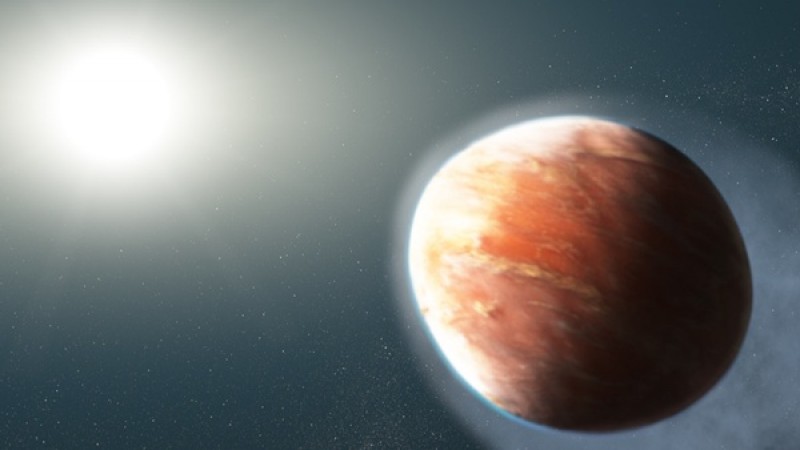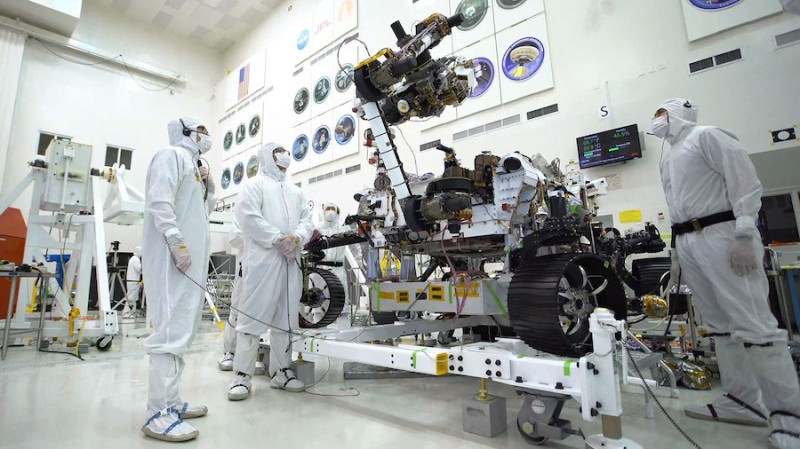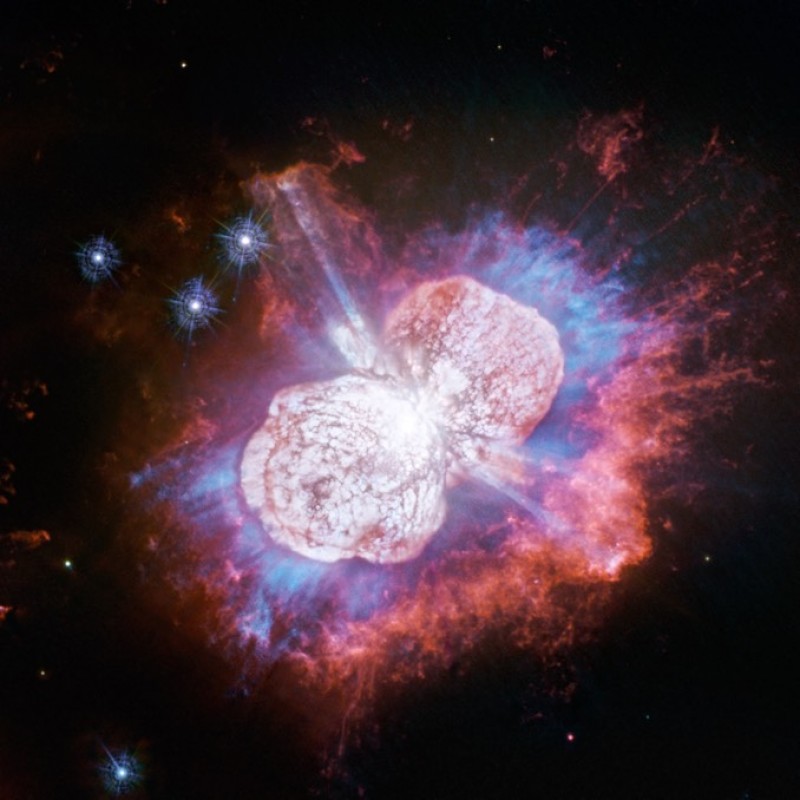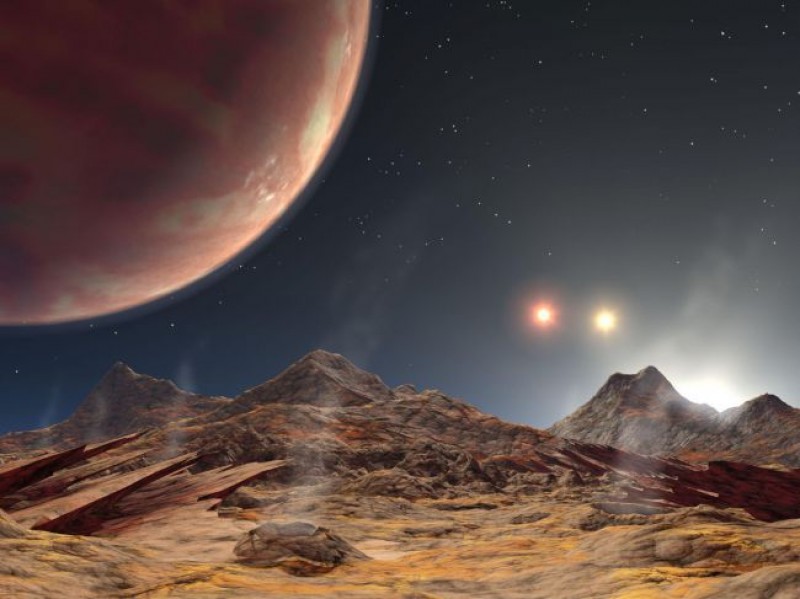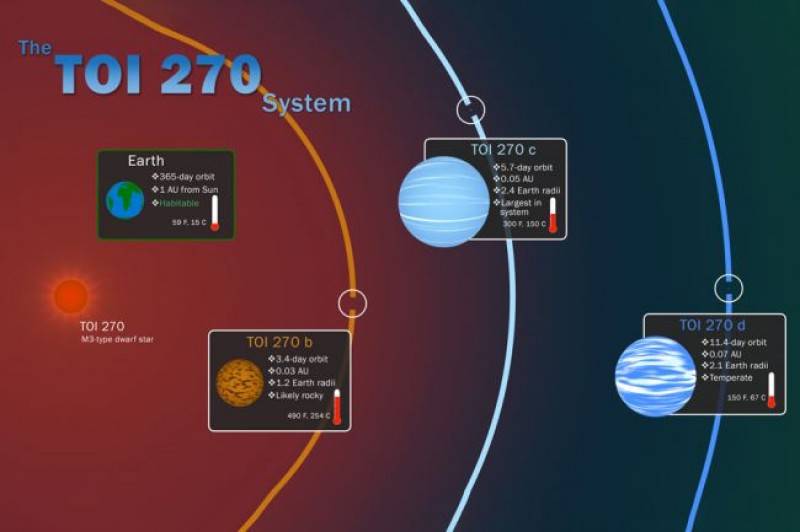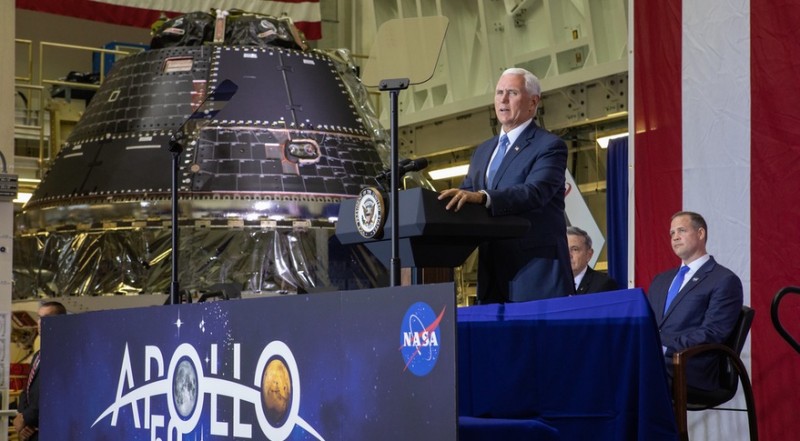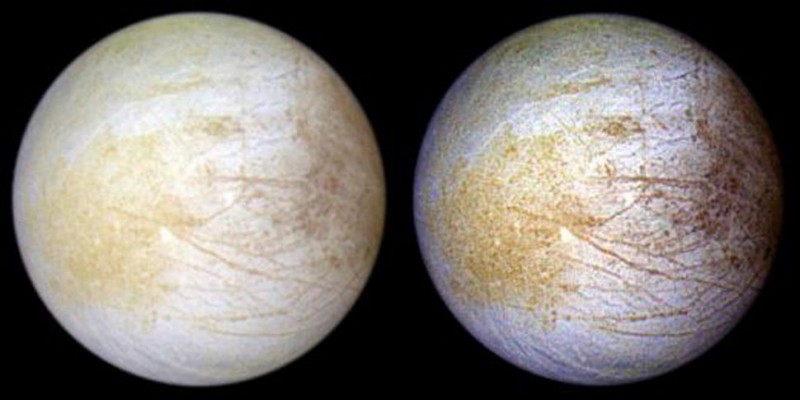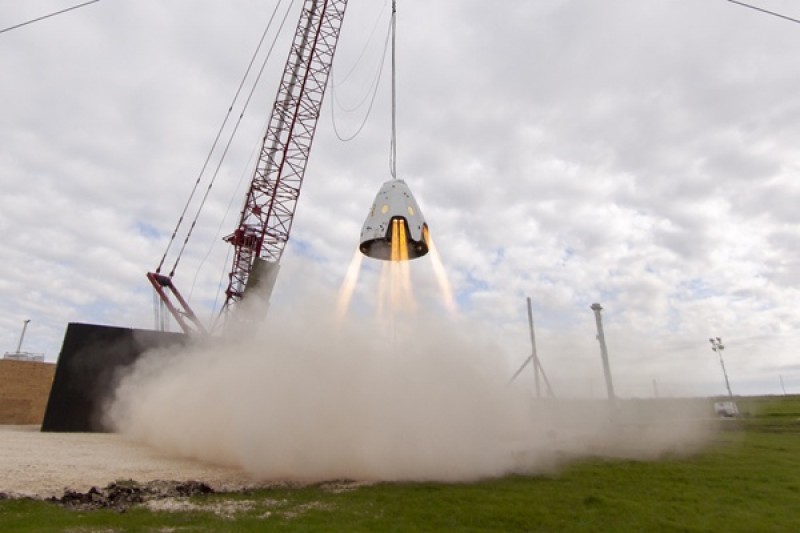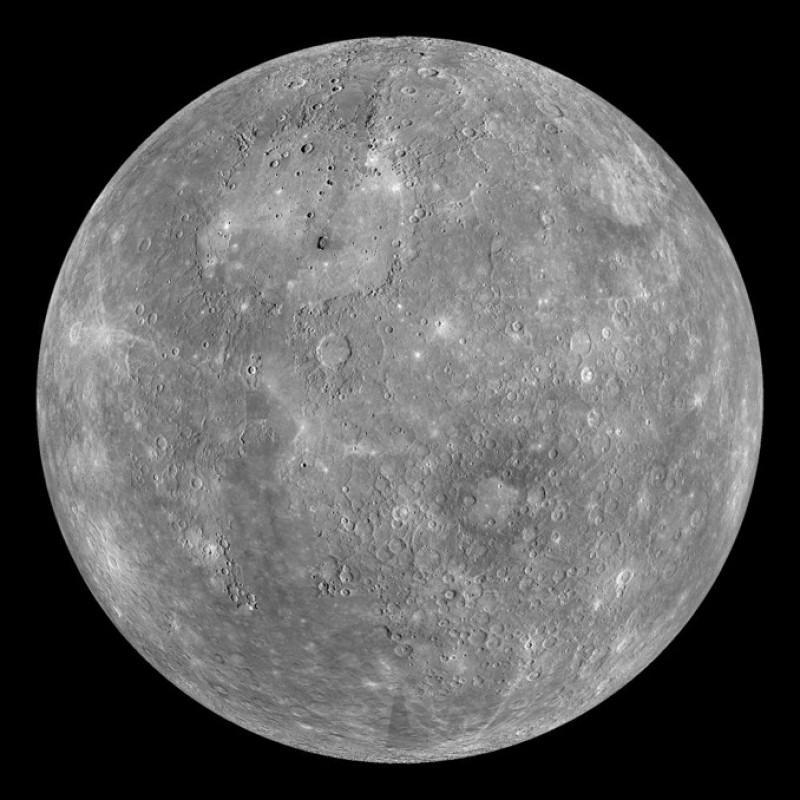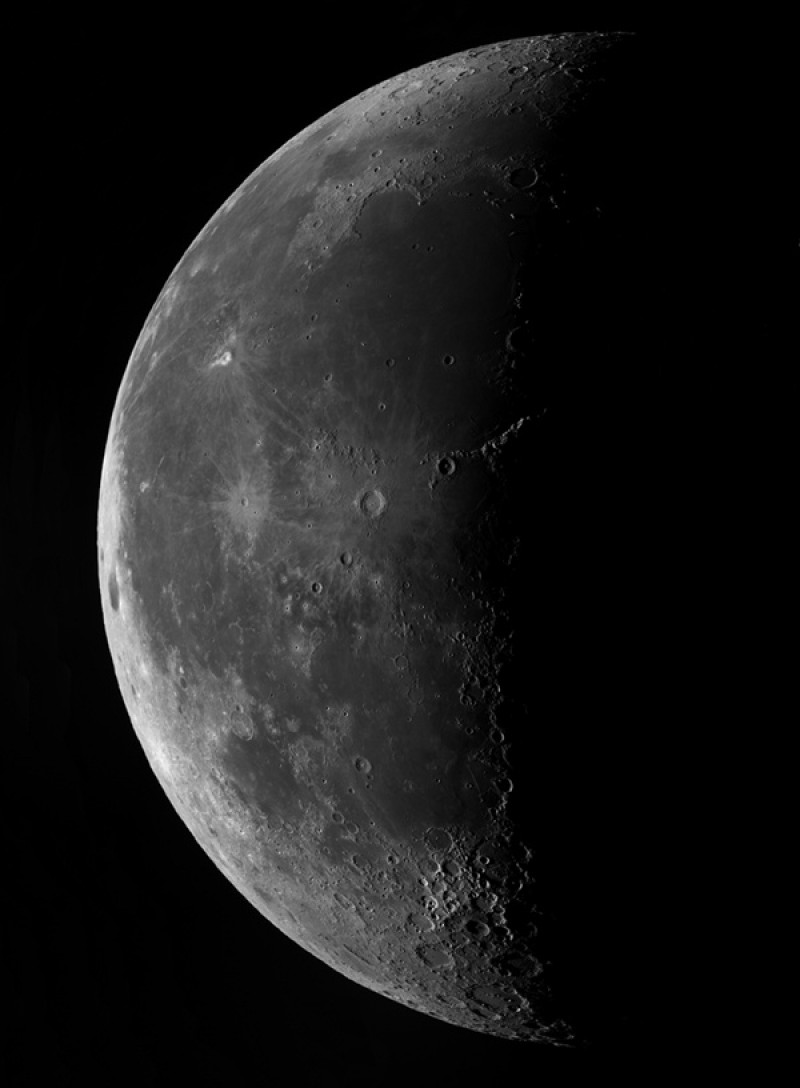News
Hubble spots a football-shaped planet leaking heavy metals into space
Monday, August 5th 2019 04:50 PM
The planet has an upper atmosphere some 10 times hotter than any other world yet measured, which astronomers think is causing heavy metals to stream away from the planet.
WASP-121b is so hot that the planet has puffed up beyond its ability to hold onto its own atmosphere, and is instead streaming it away as it flies around its star every 30 hours.
Astronomers just used NASA’s Hubble Space Telescope to take the temperature of an exoplanet called WASP-121b and discovered that the world is so hot that heavy metals actually leak behind it as it whips about its central star. It’s the first time scientists have seen such a phenomenon.
Since the beginning of the exoplanet era, when astronomers began finding planets outside our solar system, these so-called hot Jupiters have demanded attention. They’re as big or bigger than our planet Jupiter, made of mostly gassy hydrogen and helium, and orbit shockingly close to their stars. These monster...
Read More
Read More
Mars 2020 rover on track for launch next July
Thursday, August 1st 2019 05:41 PM
In this image, taken July 19 in the clean room of the Spacecraft Assembly Facility at NASA’s Jet Propulsion Laboratory in California, the rover’s 7-foot-long (2.1-meter-long) arm maneuvers its 88-pound (40-kilogram) sensor-laden turret as it moves from a deployed to a stowed configuration. Credit: NASA/JPL-Caltech
The launch of NASA’s Mars 2020 rover is less than a year away, and the steady pace of work inside the craft’s pristine assembly hall in California is keeping the mission on schedule for liftoff from Cape Canaveral next July, despite growing costs, according to mission managers.
Based on the Curiosity rover currently exploring Mars, the Mars 2020 rover will weigh more than a ton when it heads for the Red Planet next year. Engineers at NASA’s Jet Propulsion Laboratory will install the final components inside the robot in the next few weeks. Once completed, the rover will go through a series of functional and environmental tests to ensure it is re...
Read More
Read More
Going out with a bang, not a whimper, Eta Carinae continues to amaze
Wednesday, July 31st 2019 05:35 PM
A new image of Eta Carinae by the Hubble Space Telescope reveals the unexpected ultraviolet glow of magnesium embedded in warm gas (shown in blue). The observations may shed light on the sequence of events that led to the “Great Eruption” in the mid 1800s. Image: NASA, ESA, N. Smith (University of Arizona), and J. Morse (BoldlyGo Institute)
The Hubble Space Telescope has provided another remarkable view of Eta Carinae, one of the galaxy’s most massive stars as it continues a cosmic fireworks show, a slow-motion train wreck that may end with a cataclysmic supernova blast in the astronomically near future.
The show began 170 years ago when the star suddenly and dramatically brightened in an 18-year-long event now known as the “Great Eruption.” Becoming the second brightest star in the sky for more than a decade, Eta Carinae eventually faded from view, now and then brightening and dimming.
One possible explanation for the Great Eruption is that the largest...
Read More
Read More
Exoplanets at the Edge of Chaos: A New Way to Study Alien Worlds
Tuesday, July 30th 2019 07:45 PM
A new method of studying alien planets might allow scientists to determine if two-planet systems "at the edge of chaos" could host life.
Since scientists first began observing exoplanets (short for extrasolar planets) in 1992, thousands more have been discovered. These distant worlds help scientists expand our understanding of the cosmos and tell us what, if any, life might exist beyond Earth. But, even though tools like NASA's Kepler space telescope and Transiting Exoplanet Survey Satellite (TESS) have made possible to discover many more exoplanets, scientists still face challenges when they try to determine the initial positions and velocities of exoplanets.
This is why Tamás Kovács, a theoretical physicist at the Hungarian Academy of Sciences in Budapest, decided to develop a new method for analyzing exoplanet systems. According to Kovács, this new method could allow scientists to determine whether a system of exoplanets mi...
Read More
Read More
NASA's TESS Telescope Spots 2 'Missing Link' Exoplanets (and a Super Earth, Too!)
Monday, July 29th 2019 10:19 PM
Seventy-three light-years is nearby, in the cosmic scheme of things.
NASA's Transiting Exoplanet Survey Satellite (TESS) has discovered three new worlds that are among the smallest, nearest exoplanets known to date. The planets orbit a star 73 light-years away and include a small, rocky super-Earth and two sub-Neptunes — planets about half the size of our own icy giant.
(Image: © Scott Wiessinger/NASA's Goddard Space Flight Center)
NASA's newest planet hunter has bagged three more trophies, two of which may help scientists better understand how worlds form and evolve.
The Transiting Exoplaner Survey Satellite (TESS) has spotted three planets orbiting the red dwarf star TOI-270, which lies just 73 light-years from the sun, a new study reports.
All three worlds are relatively small. One is a rocky "super-Earth" not much bigger than our own planet, and the other two are "sub-Neptunes" about half the size of our solar system's other blue planet, r...
Read More
Read More
NASA announces Orion achievement on Apollo 11 anniversary
Tuesday, July 23rd 2019 04:56 PM
WASHINGTON — NASA and the White House used the 50th anniversary of the Apollo 11 landing to mark the latest achievement in the development of the Orion spacecraft and reaffirm plans to use it to return humans to the moon by 2024.
In a speech at the Kennedy Space Center July 20, Vice President Mike Pence, flanked by the Orion spacecraft being built for the Artemis 1 uncrewed mission, said that assembly of the spacecraft was now “complete” and ready for final testing.
“Thanks to the hard work of the men of NASA — men and women of NASA — and of American industry, the Orion crew vehicle for the Artemis 1 mission is complete and ready to begin preparations for its historic first flight,” Pence announced in his speech at the KSC building where Orion is assembled and tested.
The completion he referred to was the long-awaited integration of the Orion crew module, built by Lockheed Martin, with the European-built service module. The combined spacecra...
Read More
Read More
The Ocean on Jupiter's Moon Europa Has Table Salt, Just Like Earth's Seas
Wednesday, June 12th 2019 09:22 PM
The huge ocean sloshing beneath the ice shell of the Jupiter moon Europa may be intriguingly similar to the seas of Earth, a new study suggests.
Scientists have generally thought that sulfate salts dominate Europa's subsurface ovean, which harbors about twice as much water as all of Earth's seas put together. But the Hubble Space Telescope has detected the likely presence of sodium chloride (NaCl) on Europa's frigid surface, the study reports.
The NaCl — the same stuff that makes up plain old table salt — is probably coming from the ocean, study team members said. And that's pretty exciting, given that the saltiness of Earth's oceans comes primarily from NaCl.
"We do need to revisit our understanding of Europa's surface composition, as well as its internal geochemistry," lead author Samantha Trumbo, of the California Institute of Technology in Pasadena, told Space.com.
"If this sodium chloride is really reflective of the internal composition,...
Read More
Read More
Crew Dragon test mishap could delay first SpaceX human flight
Tuesday, April 23rd 2019 06:54 PM
SpaceX’s Crew Dragon capsule experienced an “anomaly” during a rocket test on Saturday that sent smoke drifting high over its launchpad at the Kennedy Space Center in Florida. Elon Musk and SpaceX have been short on details so far, but unconfirmed video footage shows the spacecraft being destroyed. The same Crew Dragon capsule completed a flawless flight to the International Space Station in March.The event raises concerns that SpaceX may not be able to fly humans to space for the first time this year, let alone hit their target launch date in July.
Test malfunction
The mishap took place as SpaceX was performing a static fire of their SuperDraco engines. That means the spacecraft was tethered and not meant to leave the launchpad. SuperDracos are directly attached to the crew capsule, and the large Falcon rockets that would actually launch the spacecraft into orbit were not in use. The SuperDracos’ job is to carry the crew capsule safely away from the...
Read More
Read More
Mercury has a heart of iron; literally
Monday, April 22nd 2019 08:31 PM
Using sophisticated software to precisely analyse how Mercury’s gravity affected the trajectory of NASA’s MESSENGER spacecraft during multiple low-altitude orbits, researchers have been able to show the small planet must have a large, solid-iron inner core measuring some 2,000 kilometres (1,260 miles) across, almost as large as Earth’s.
Including its molten metal outer layer, Mercury’s metallic core fills nearly 85 percent of the planet’s volume, huge compared to the cores of the solar systems other terrestrial planets.
“Mercury’s interior is still active, due to the molten core that powers the planet’s weak magnetic field, relative to Earth’s,” said Antonio Genova, an assistant professor at Sapienza University of Rome who led the research. “Mercury’s interior has cooled more rapidly than our planet’s. Mercury may help us predict how Earth’s magnetic field will change as the core cools.”
To det...
Read More
Read More
The Sky This Week from April 19 to 28
Friday, April 19th 2019 09:02 PM
Friday, April 19Full Moon arrived at 7:12 a.m. EDT this morning, but it still looks completely illuminated tonight. It rises in the east about a half-hour after sunset and climbs well above the southeastern horizon by late evening. The Moon spends the evening in the northwestern corner of the constellation Libra the Scales.Saturday, April 20Venus pokes above the eastern horizon about an hour before sunrise. The brilliant planet dominates the predawn sky as the rosy glow heralding the Sun’s arrival grows brighter. Venus shines at magnitude –3.9, some four times brighter than the second-brightest planet, Jupiter. When viewed through a telescope, the inner world shows a disk that spans 12" and appears 86 percent lit.Sunday, April 21Mars continues to add its ruby-red glow to Taurus the Bull this week. Shining at magnitude 1.6, the Red Planet appears slightly fainter than the constellation’s brightest star, ruddy 1st-magnitude Aldebaran. The planet lies nearly 30° ab...
Read More
Read More
